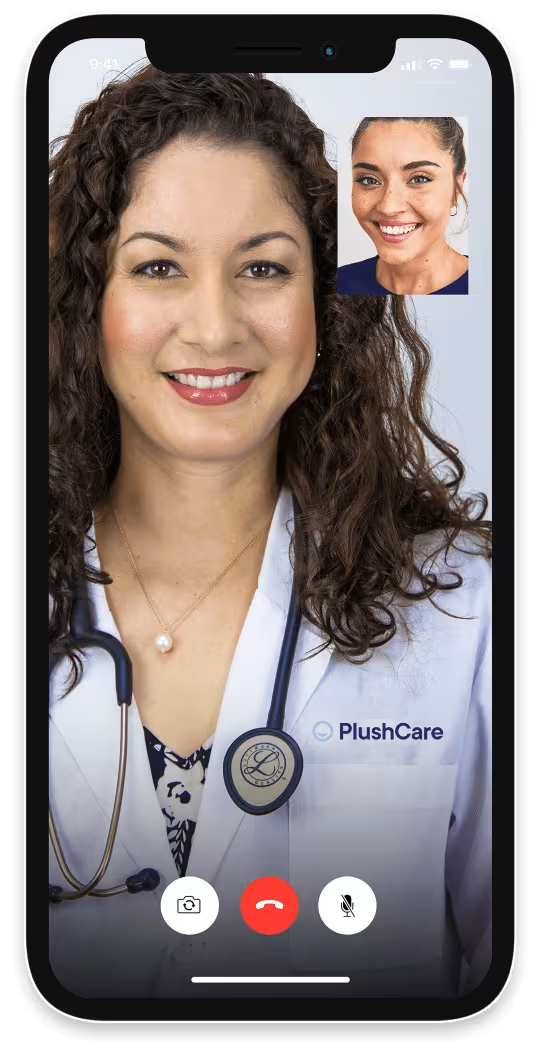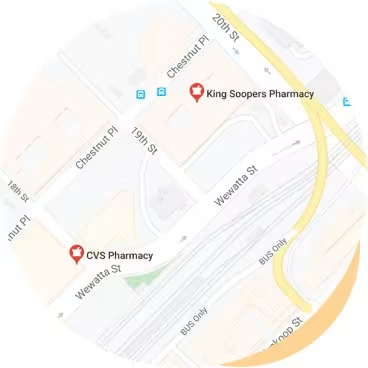Online pediatric consultations: caring telemedicine for your child's needs
Connect with our online board-certified physicians for pediatric care every day, including weekends and holidays, to address urgent health issues or manage chronic conditions. Your child's health is in expert hands from birth through adolescence. Get personalized pediatric care today.
Book an appointmentOn-demand pediatric care anytime, anywhere
Physical exams and well-child visits at home
Trusted doctors treating children from birth
*Prescriptions are provided at the doctor’s discretion. Learn more about our controlled substances policy and how to save up to 80% with our prescription discount card.
Comprehensive pediatric care online
We provide compassionate, holistic care for every stage of your child's growth and development. Our online doctors are experienced in pediatric medicine, whether it's for a regular check-up, a viral illness, rash treatment, or pediatric urgent care.
Viral infections
From the common cold and influenza to more serious illnesses like measles or chickenpox, our doctors can diagnose and manage a range of infections for a quick and comfortable recovery.
Bacterial and fungal infections
We can diagnose and treat conditions like strep throat, ear infections, and more. We prescribe antibiotics or antifungals for effective treatment.
Respiratory conditions and childhood sensitivities
Our doctors provide thorough care for asthma and allergies to ensure your child can thrive.
Insects and parasites
Our physicians can effectively treat lice, scabies, and bed bug bites to provide quick relief and prevent additional concerns.
Skin concerns
Our expert doctors provide care for various types of dermatitis, including eczema, and offer acne and skincare advice and medication to treat flare-ups.
Pediatric telehealth FAQs
Can babies get pediatric care online?
Yes, babies can receive pediatric care from an online physician. Our board-certified doctors can treat patients from birth. They can help with various common concerns such as feeding issues, rashes, common cold symptoms, and developmental milestones.
Once a brief medical history is taken and their symptoms are evaluated, our doctors can send a prescription for your child to the local pharmacy, if needed. However, it's important to note that certain conditions or symptoms require in-person examination or emergency care.What is the use of telemedicine in pediatrics?
Telemedicine has several applications in pediatrics that can greatly enhance the accessibility and convenience of healthcare for children. For example, virtual visits allow physicians to consult with patients and their parents remotely. This can be particularly useful for managing chronic conditions, medication management, or for pediatric urgent care to address acute illnesses such as common colds.
Telemedicine also allows for continuity of care with an online provider when in-person visits, such as during public health crises or severe weather events, might not be possible.
Although telemedicine offers many advantages, it may not be appropriate for all situations. Physical examinations, sports physicals, well-baby/child visits, vaccinations, and some diagnostic tests will still need an in-person visit.
How to get pediatric care online

Step 1
Book a pediatric care appointment.
Book your same-day appointment from anywhere.

Step 2
Chat with a doctor for pediatric telehealth.
Visit a board-certified doctor on your smartphone or computer.

Step 3
Pick up your child’s prescriptions.
We can send prescriptions to any local pharmacy. Prescriptions are provided at the doctor’s discretion.
Pediatric telehealth pricing details
How pricing works
To get top-quality pediatric care online, join our monthly membership and get discounted visits.
Paying with insurance
Membership
$16.99/month
First month free
Visits
Copay
30 days of free membership
Same-day appointments 7 days a week
Unlimited messages with your Care Team
Prescription discount card to save up to 80%
Exclusive discounts on lab tests
Free memberships for your family
Cancel anytime
Visit price with insurance
Often the same as an office visit. Most patients with in-network insurance pay $30 or less!
We accept these insurance plans and many more:
Paying without insurance
Membership
$16.99/month
First month free
Visits
$129
30 days of free membership
Same-day appointments 7 days a week
Unlimited messages with your Care Team
Prescription discount card to save up to 80%
Exclusive discounts on lab tests
Free memberships for your family
Cancel anytime
Visit price without insurance
Initial visits are $129.
If we're unable to treat you, we'll provide a full refund.
Frequent Urgent Care Searches
- Scopolamine patches Urgent care for pneumonia Zofran Prescription nausea medication Tessalon perles Migraine Prednisone Asthma inhaler prescription Medrol (methylprednisolone) Constulose (lactulose) Cough Treatment Online Food poisoning treatments Gastritis treatment Linzess (linaclotide) Nurtec (rimegepant) Vistaril
Pediatric online resources
Sources:
PlushCare is dedicated to providing you with accurate and trustworthy health information.
American Academy of Pediatrics. Pediatric Telehealth in the COVID-19 Pandemic Era and Beyond. Accessed on September 11, 2023 at https://publications.aap.org/pediatrics/article/148/3/e2020047795/179707.
Centers for Disease Control and Prevention (CDC). Young Children: Diseases & Conditions. Accessed on June 18, 2024 at https://www.cdc.gov/parents/children/diseases-and-conditions.html?CDC_AAref_Val=https://www.cdc.gov/parents/children/diseases_conditions.html
Children's Hospital of Philadelphia (CHOP). Conditions & Diseases. Accessed on September 11, 2023 at https://www.chop.edu/conditions-diseases.